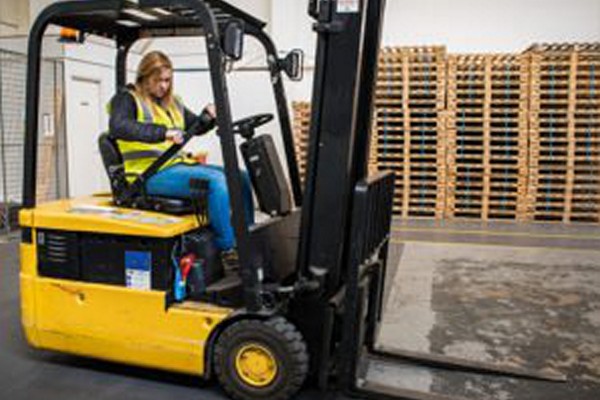|
Three steps for returning to work with material handling equipment
Many businesses are in the process of returning to work, implementing important guidance from the government and HSE to reduce the risk of infection as far as possible. But for those that use materials handling equipment, there are additional unique and critical steps to consider for the safety of their teams.
Step 1: Review current safety standards
If an operator has been away from their post for some time, it may be necessary to assess their current skill levels on their return. This is to ensure no skill-fade has taken place during recent months, which could result in unsafe operation. Assessments can be carried out in-house by a qualified, competent person, or by an external provider.
You must also ensure your MHE is safe to return to service. When recommissioning equipment that has been stood down, be sure to check the Thorough Examination Report to see if an inspection is due and follow the instructions in the operator manual on preparing the truck for reintroduction. CFTS has prepared a ‘Practical 3-Point Plan’ to help ensure that forklift trucks are safe and ready to use again.
Step 2: Action any requirements (within recommended guidelines)
Once the operator has been assessed, any training requirements will be highlighted and should be actioned before the operator is allowed to resume use of the equipment. If they have missed any refresher training during lockdown, this will need to be arranged, where possible (the HSE has issued guidance regarding any required extensions to refresher periods during the outbreak).
Many businesses will also have altered site layouts and processes to incorporate social distancing, and there may be new COVID-19 safety measures that the operator has to follow, including new Safe Systems of Work. All of this will likely affect the operator’s daily tasks and route around the site. Job-specific and familiarisation training will be key here, to help the operator get up to speed on how to complete their duties within the context of their updated site. More information on all essential elements of forklift training can be found in Approved Code of Practice L117.
Any MHE operator training that takes place will need to be done in a safe way that aligns with government and HSE guidance. Social distancing must be maintained at all times and precautions should be taken to protect everyone from the risk of infection. The Association of Industrial Truck Trainers has produced detailed guidance on safe training methods during the COVID-19 outbreak, including:
During classroom training: candidates should not share items such as pens or notebooks, and hand washing facilities must be available;
During practical training: all equipment must be sanitised before it is touched, or candidates must wear single-use disposable gloves.
Equipment should be cleaned thoroughly before use, then all relevant contact areas cleaned between users. Guidance on appropriate MHE cleaning methods is available from BITA.
Step 3: Monitor operations to uphold safety
Once MHE operators are familiar with new processes and authorised to use the equipment again, they can commence their duties. But it is vital that managers and supervisors monitor trained staff to ensure that safety continues to be upheld day-to-day. Where there are any instances of unsafe practice, operators must be corrected to make sure bad habits don’t spread throughout the workforce and become accepted as the norm.
The HSE makes specific reference to this in their recent COVID-19 guidance document, stating: “[Employers or duty holders] should also be able to demonstrate that they are meeting their legal duty to monitor and supervise lift truck drivers to ensure that they continue to operate safely.”
By taking into consideration all of the risks associated with returning MHE operators to work, employers can better protect their teams, and help to keep their businesses safe and productive.
|



